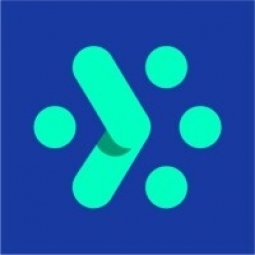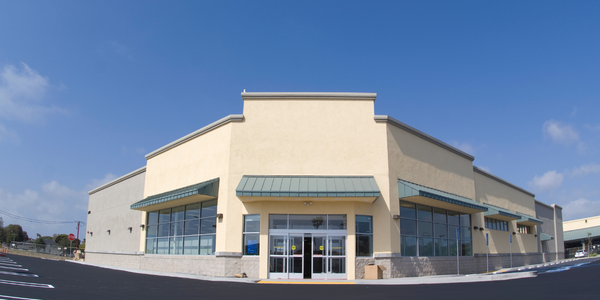Customer Company Size
Large Corporate
Region
- Europe
Country
- Switzerland
Product
- Adverity
Tech Stack
- Microsoft Azure
- Power BI
- Google Analytics
- Google Ads
- Facebook Ads
- Bing Ads
Implementation Scale
- Enterprise-wide Deployment
Impact Metrics
- Productivity Improvements
- Cost Savings
Technology Category
- Analytics & Modeling - Real Time Analytics
Applicable Industries
- Apparel
Applicable Functions
- Sales & Marketing
- Business Operation
Use Cases
- Supply Chain Visibility
- Predictive Quality Analytics
Services
- Data Science Services
About The Customer
ODLO is a sportswear company that was founded in 1946 in Oslo by Odd Roar Lofterød. The company began when Odd Roar designed a new kind of training suit to keep his son from freezing during his speed skating training sessions. Soon, top athletes and The Norwegian Olympic team began relying on his warm, stretchy, and high-performance suits, and the story of ODLO as the innovator of sports fabric began. Today, ODLO offers dedicated seasonal collections in sports underwear and baselayers, and clothing for runners, cyclists, and hikers. The company is headquartered in Huenenberg, Switzerland, and operates brand stores and outlets across Europe. Their products are available in over 8,000 shops around the world and are also available to customers through ODLO’s online shop, which covers over 10 countries in Europe and also the US market.
The Challenge
ODLO, a sportswear company with a wide retail network and an online store, was struggling with monitoring and analyzing marketing data across different channels and ad platforms. This was time-consuming and difficult, leading to insufficient control over daily marketing spend and difficulty in finding the right marketing mix and efficiently steering the allocated budget. The company's data management difficulties stemmed from the siloed marketing tool landscape, making it tough to collect, process and analyze marketing data. This environment is a mixture of Google Analytics, Google Ads, Facebook Ads, Bing Ads, and other popular platforms, while Microsoft Excel spreadsheets were used to assemble the data manually from all these sources and create reports. Meanwhile, other sectors in the company were building and analyzing transactional reports, drawing information from order management and ERP systems.
The Solution
ODLO decided to build a solid data management infrastructure on its existing IT infrastructure based on Microsoft’s solutions, including Azure and Power BI. They chose Adverity’s intelligent marketing analytics platform due to its broad range of flexible connectors to a large number of online marketing tools, including ones that use file-based data. An additional benefit of Adverity’s platform was the full automation of data harmonization, data cleansing and data preparation processes. ODLO had three main objectives in sight: Build a consolidated data and reporting landscape for daily performance monitoring, steer and allocate ad budget more efficiently, spending it where the highest return is expected, and foster data-driven decisions within the online business, based on improved transparency of the purchase funnel.
Operational Impact
Quantitative Benefit

Case Study missing?
Start adding your own!
Register with your work email and create a new case study profile for your business.
Related Case Studies.

Case Study
Fire Alarm System and Remote Monitoring Sytem
Fire alarm systems are essential in providing an early warning in the event of fire. They help to save lives and protect property whilst also fulfilling the needs of insurance companies and government departments.Fire alarm systems typically consist of several inter-linked components, such as smoke detectors, heat detector, carbon monoxide, manual call points, sounders, alarm and buzzer. The fire alarm system should give immediate information in order to prevent the fire spread and protect live and property.To get maximum protection a shoe manufacturer in Indonesia opted for a new fire alarm system to monitor 13 production sites spread over 160 hectars. Although the company had an existing fire alarm system, it could not be monitored remotely.It was essential that the new system would be able to be monitored from a central control room. It needed to be able to connect to the existing smoke detector and manual call point. Information should be easily collected and passed on to the Supervisory Control and Data Acquisition (SCADA) system. Furthermore, the system should have several features such as alarm management, auto reporting, being connected to many client computers without additional cost, and run 24/7 without fails. The company also needed a system which could be implemented without changing the architecture of the existing fire alarm system.

Case Study
IoT Applications and Upgrades in Textile Plant
At any given time, the textile company’s manufacturing facility has up to 2,000 textile carts in use. These carts are pushed from room to room, carrying materials or semi-finished products. Previously, a paper with a hand-written description was attached to each cart. This traditional method of processing made product tracking extremely difficult. Additionally, making sure that every cart of materials or semi-finished products went to its correct processing work station was also a problem. Therefore, the company desired an intelligent solution for tracking assets at their factories. They also wanted a solution that would help them collect process data so they could improve their manufacturing efficiency.

Case Study
Retailer Uses RFID Scanner to Improve Efficiency
Patrizia Pepe wished to improve the logistics of their warehouse: accepting incoming goods from their production sites, movement of items throughout
the warehouse, and packaging of goods for distribution to the retail locations. They initially tried to use barcodes for this function. Because barcodes must be individually scanned within a line-of-sight, the acceptance of goods coming into the warehouse was too time consuming. Working with the University of Florence, Patrizia Pepe instituted a five-month pilot project beginning in August of 2009 to test the validity of an RFID solution. The pilot involved tagging of about 60,000 items for the second seasonal collection, and convinced the company to move forward with tagging all items.

Case Study
Monitoring and Controlling Automatic Mixing and Dispensing Machines
As technology advances, textile manufacturing has been transformed from a labor-intensive to a partially or fully automated industry. Automation is significant in all segments of textile production - from spinning to printing, and textile machinery manufacturers are constantly searching for new technologies and automation processes will increase the productivity of their machines. The color paste mixing and dispensing machine is an essential part of the printing and dyeing process. With the advantage of automatically computerized controls and database management, the system can significantly improve its dispensing precision, working efficiency and production quality as well as reducing material consumption.









